Animal habitats and habitats. Relationships between animals in nature. Electronic textbook for 7th grade students of the natural science lyceum
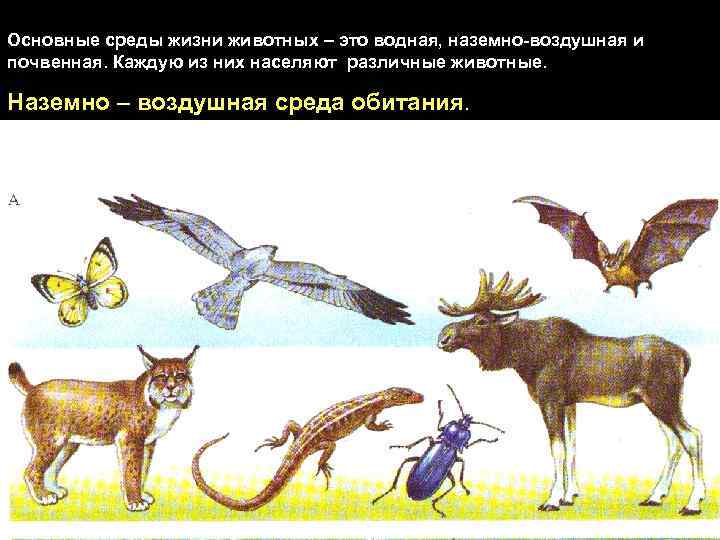 The main living environments of animals are water, land-air and soil. Each of them is inhabited by different animals. Ground - air habitat.
The main living environments of animals are water, land-air and soil. Each of them is inhabited by different animals. Ground - air habitat.
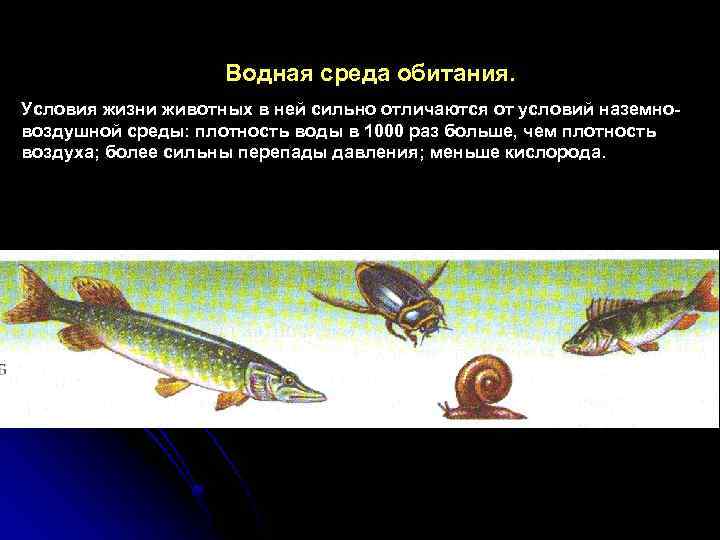 Aquatic habitat. The living conditions of animals in it are very different from the conditions of the land-air environment: the density of water is 1000 times greater than the density of air; greater pressure drops; less oxygen.
Aquatic habitat. The living conditions of animals in it are very different from the conditions of the land-air environment: the density of water is 1000 times greater than the density of air; greater pressure drops; less oxygen.
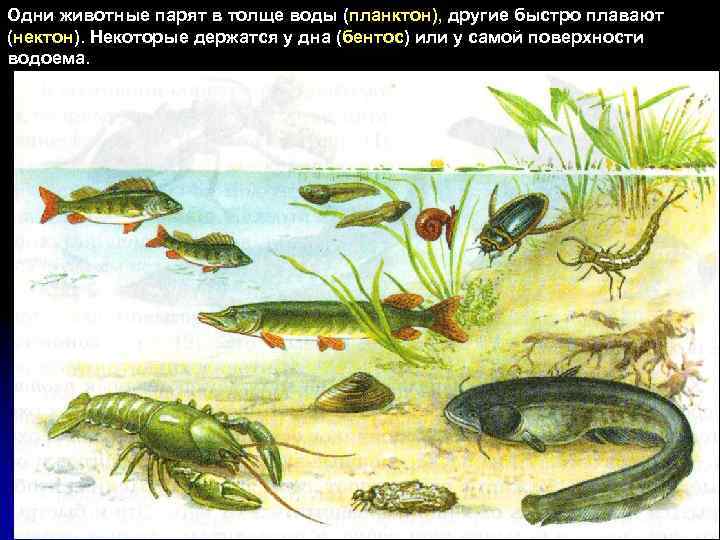 Some animals float in the water column (plankton), others swim quickly (nekton). Some stay at the bottom (benthos) or at the very surface of the reservoir.
Some animals float in the water column (plankton), others swim quickly (nekton). Some stay at the bottom (benthos) or at the very surface of the reservoir.
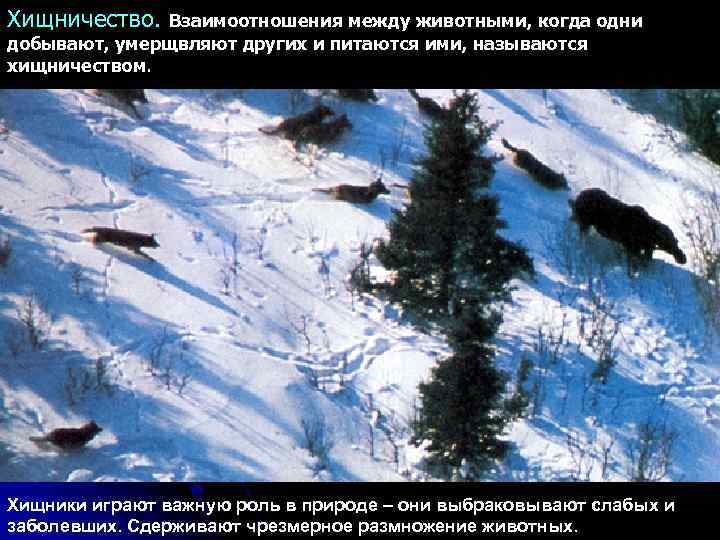 Predation. The relationship between animals, when some hunt, kill others and feed on them, is called predation. Predators play an important role in nature - they cull the weak and sick. Contains excessive reproduction of animals.
Predation. The relationship between animals, when some hunt, kill others and feed on them, is called predation. Predators play an important role in nature - they cull the weak and sick. Contains excessive reproduction of animals.
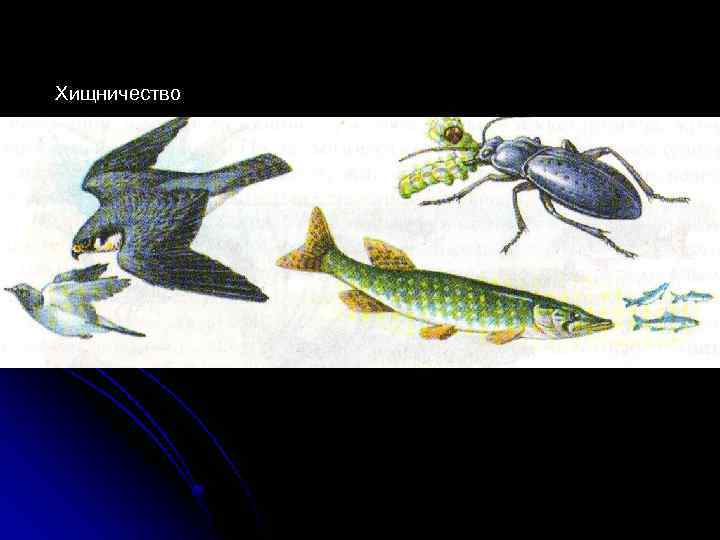
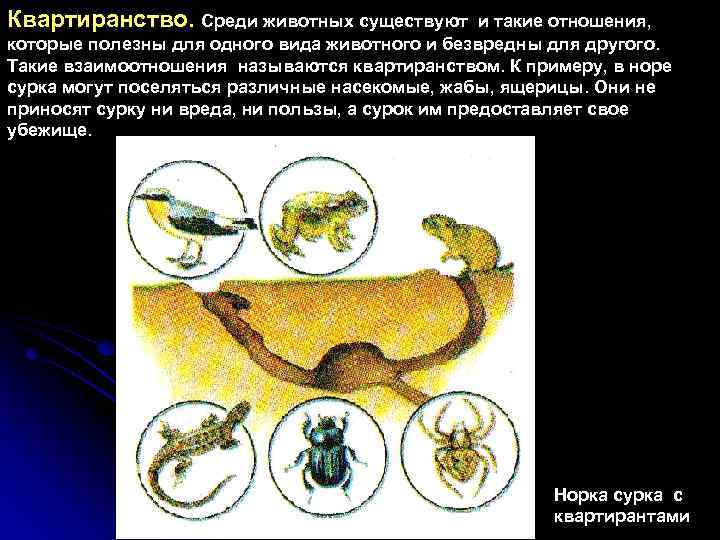 Tenancy. Among animals, there are also relationships that are beneficial for one type of animal and harmless for another. Such relationships are called tenancy. For example, various insects, toads, and lizards can settle in a groundhog hole. They bring neither harm nor benefit to the groundhog, and the groundhog provides them with its shelter. Marmot mink with boarders
Tenancy. Among animals, there are also relationships that are beneficial for one type of animal and harmless for another. Such relationships are called tenancy. For example, various insects, toads, and lizards can settle in a groundhog hole. They bring neither harm nor benefit to the groundhog, and the groundhog provides them with its shelter. Marmot mink with boarders
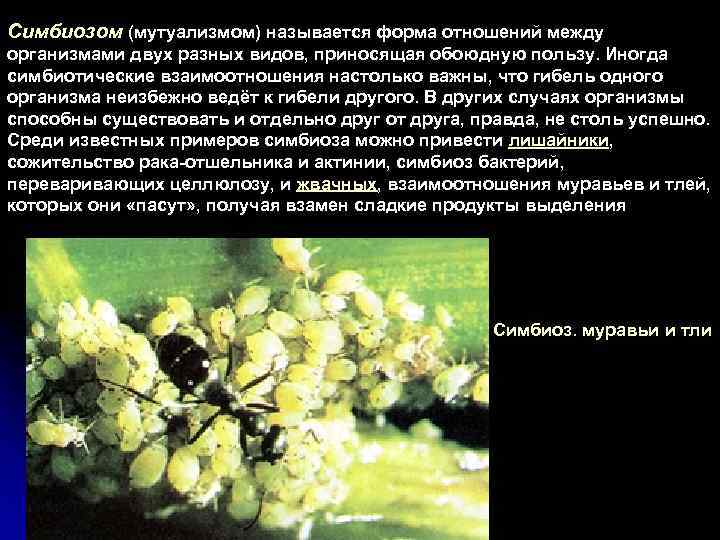 Symbiosis (mutualism) is a form of relationship between organisms of two different species that brings mutual benefits. Sometimes symbiotic relationships are so important that the death of one organism inevitably leads to the death of the other. In other cases, organisms are able to exist separately from each other, although not so successfully. Among the well-known examples of symbiosis are lichens, the cohabitation of a hermit crab and an anemone, the symbiosis of bacteria that digest cellulose and ruminants, the relationship between ants and aphids, which they “graze”, receiving in return sweet excretory products. Symbiosis. ants and aphids
Symbiosis (mutualism) is a form of relationship between organisms of two different species that brings mutual benefits. Sometimes symbiotic relationships are so important that the death of one organism inevitably leads to the death of the other. In other cases, organisms are able to exist separately from each other, although not so successfully. Among the well-known examples of symbiosis are lichens, the cohabitation of a hermit crab and an anemone, the symbiosis of bacteria that digest cellulose and ruminants, the relationship between ants and aphids, which they “graze”, receiving in return sweet excretory products. Symbiosis. ants and aphids
